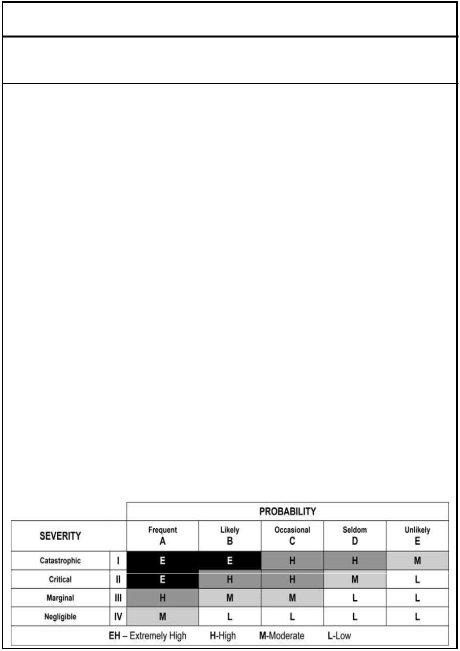The NGB Form 5-19-1, also known as the ARNG Hasty Risk Management Card, serves as a crucial tool in the management and assessment of risks within the Army National Guard's operations. This form is guided by multiple directives, including NGR 385-10, FM 5-19 CRM (Composite Risk Management), and DA Pam 385-30, which collectively underscore the importance of a systematic approach to identifying, evaluating, and mitigating risks. The form facilitates a comprehensive process comprising several key steps: identifying potential hazards, assessing and developing controls for these hazards, making informed risk decisions, and implementing those controls effectively. Moreover, it provides a structure for evaluating the severity and probability of risks, thereby assisting in the categorization of overall risk as low, moderate, high, or extremely high. Finally, it emphasizes that risk decisions should be made at the appropriate level of authority and that unnecessary risks are unacceptable, highlighting the integral role of risk management in ensuring the safety, efficiency, and success of Army National Guard missions.
| Question | Answer |
|---|---|
| Form Name | Ngb Form 5 19 1 |
| Form Length | 2 pages |
| Fillable? | No |
| Fillable fields | 0 |
| Avg. time to fill out | 30 sec |
| Other names | mett, ngb form 100 14 2, ngb form 5 19 1, ARNG |

ARNG HASTY RISK MANAGEMENT CARD
The proponent agency is
MISSION / TASK: |
PREPARED BY: |
|
DATE: |
|
|
|
|
|
|
|
|
IDENTIFY HAZARDS |
ASSESS |
|
DEVELOP CONTROLS / MAKE RISK DECISIONS |
RESIDUAL |
|
HAZARDS |
|
||||
|
RISK |
||||
|
|
|
|
||
|
(INITIAL RISK) |
|
|
|
|
|
|
|
|
|
|
|
|
|
|
|
|
IMPLEMENT CONTROLS |
SUPERVISE AND EVALUATE |
Overall Risks after Controls are Implemented (Circle One) |
Risk Decision Authority (Rank, Name, Title and Signature). |
Low (L) Moderate ( M) High (H) Extremely High (EH) |
|
NGB Form

DO NOT ACCEPT ANY UNNECESSARY RISK!
ENSURE RISK DECISIONS ARE MADE AT THE APPROPRIATE LEVEL.
HAZARD SEVERITY
The expected consequences of an event in terms of degree of injury, property damage
or other
Death or permanent total disability, system loss, major damage, sig- CATASTROPHIC nificant property damage or mission failure.
Permanent partial disability, temporary total disability in excess of 3
CRITICAL months, major system damage, significant property damage or sig- nificant mission degradation.
MARGINAL Minor injury, lost workday incident, minor system damage, minor property damage or some mission degradation.
NEGLIGIBLE First aid or minor medical treatment, minor system impairment or little / no impact on mission accomplishment.
HAZARD PROBABILITY |
COMPOSITE RISK MANAGEMENT (CRM) |
|
AT A GLANCE |
||
|
||
Probability is the likelihood |
CRM is the Army’s primary |
|
an event will occur. |
ards and controlling risks across the full spectrum of Army operations. |
|
Use the following five steps (see |
||
|
||
FREQUENT: |
1. Identify the Hazards: Hazards have the potential to cause injury, illness, or |
|
Occurs often or continuously |
death of personnel; damage to or loss of equipment or property; or mission |
|
degradation. |
||
experienced. |
||
|
||
LIKELY: |
2. Assess the Hazard to determine Risk: Assess the probability of the event/ |
|
occurrence. Estimate the expected result/severity of the event/occurrence. |
||
Occurs several times. |
Determine the specified level of risk for a given probability/severity using the |
|
risk assessment matrix below. |
||
|
||
OCCASIONAL: |
3. Develop controls and Make Risk Decisions: After assessing each hazard |
|
Occurs sporadically. |
develop one or more controls that either eliminate the hazard or reduce the risk |
|
of the incident. Consider the reason for the hazard, not just the hazard itself. |
||
|
||
SELDOM: |
4. Implement Controls: Ensure that controls are integrated into SOPs, orders, |
|
Unlikely, but could occur at |
briefings, and staff estimates. Ensure controls are converted into clear and |
|
simple execution orders. |
||
some time. |
||
|
||
UNLIKELY |
5. Supervise and Evaluate: This must occur throughout all phases of any |
|
operation or activity. It identifies weaknesses and helps adjustment controls |
||
Can assume it will not occur. |
based on events. |
|
|
|
Risk Assessment Matrix (FM
NGB Form